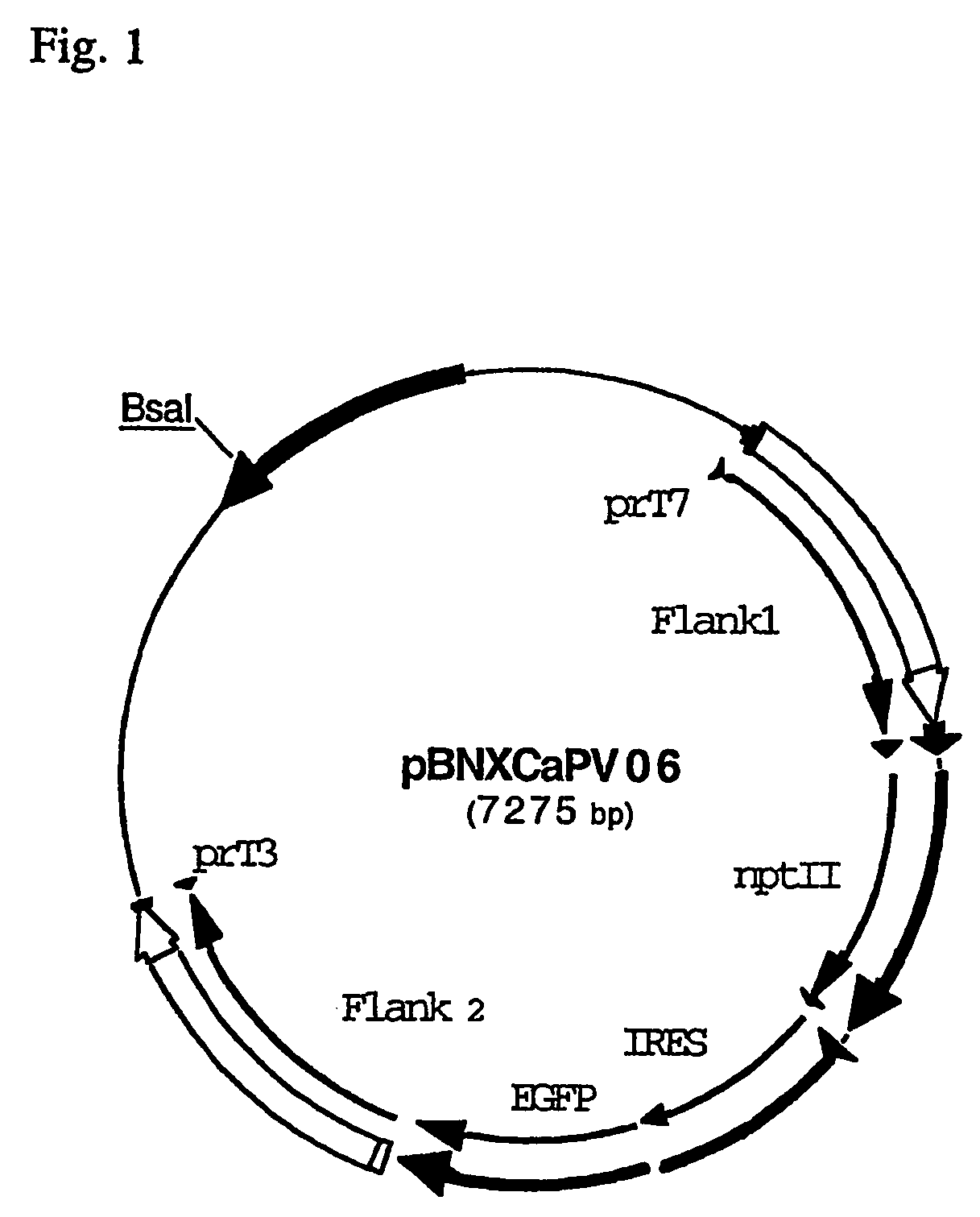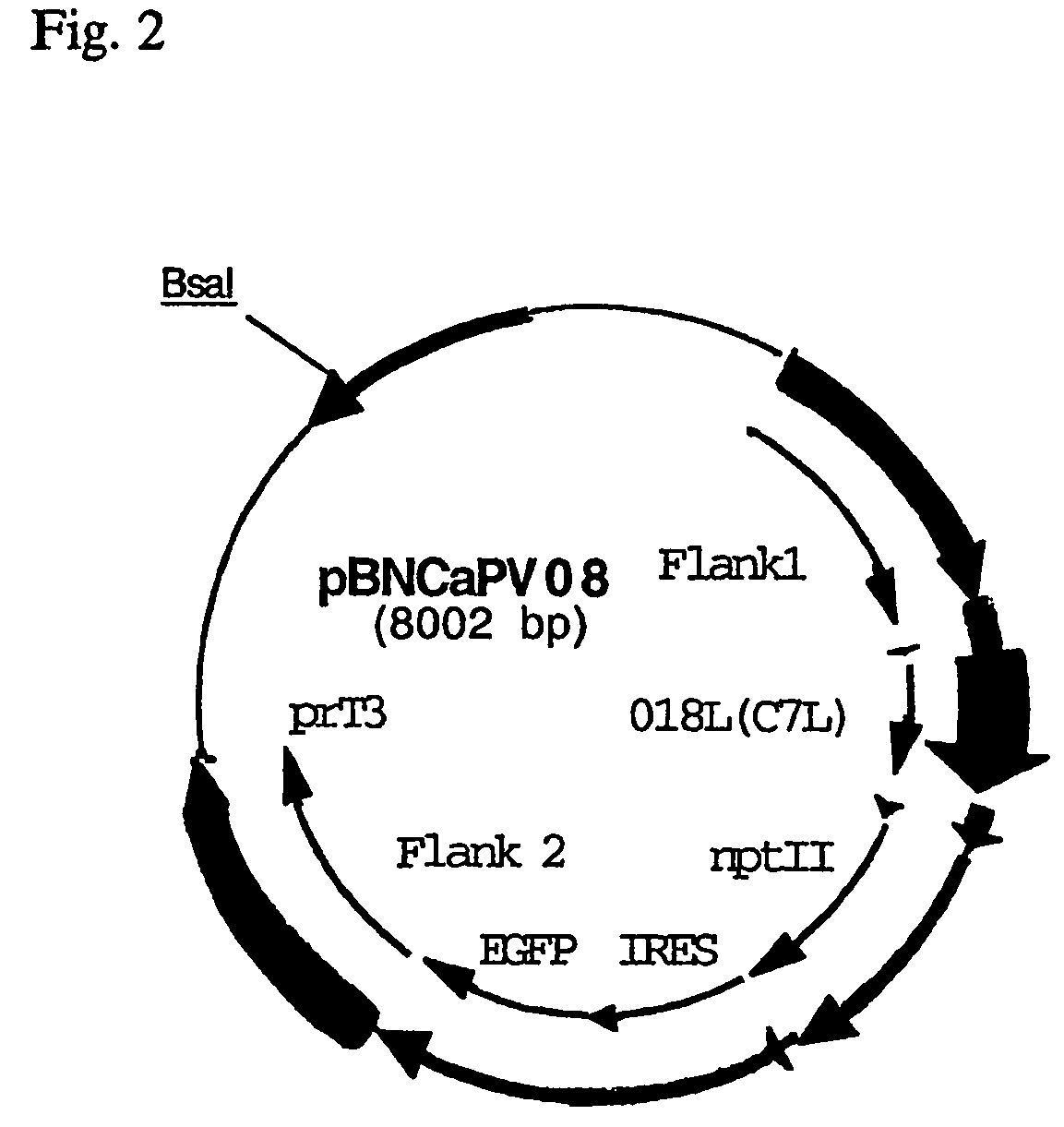Isolated avian cell that expresses Vaccinia virus host range genes
a technology of avian cells and host range genes, which is applied in the field of isolated avian cells that express vaccinia virus host range genes, can solve the problems of difficult to produce large quantities of (recombinant) avipoxviruses in an industrial scale, low titers of avian cells, etc., and achieve the effect of increasing the amount of viruses
- Summary
- Abstract
- Description
- Claims
- Application Information
AI Technical Summary
Benefits of technology
Problems solved by technology
Method used
Image
Examples
example 1
Construction of Recombinant Canarypox canBNX01 (pS NPTII IRES EGFP) and canBN01 (pS NPTII IRES EGFP C7L-MVA)
Summary:
[0065]This example describes the generation of recombinant Canarypox virus using NPTII (neomycin resistance gene) and EGFP (green fluorescent protein) selection. The Vaccinia Virus host range gene C7L was cloned into an intergenic region of Canarypox by homologous recombination. After two plaque purifications (PP) there was no wild type virus detectable but only recombinant virus. Sequencing of the integration region showed proper integration and no mutations. RT-PCR showed successful expression of the integrated genes, namely the C7L gene from Modified Vaccinia Ankara and the marker gene cassette. The recombinant virus was shown to be stable up to passage number twenty, even without the selective pressure of Geneticin®.
Introduction:
[0066]The aim of this example was to construct a recombinant Canarypox virus expressing the Vaccinia Virus host range gene C7L plus marker...
example 2
REFERENCES FOR EXAMPLE 2
[0111]Esposito, J. J. et al.: Arch. Virol. Suppl. (1991) 2, 79-102.[0112]Oguirua, N. et al.: Journal of General Virology (1993) 74, 1409-1413.[0113]Perkus, M. et al.: Virology (1990) 179, 276-286.[0114]Plotkin, S. A. et al.: Dev Biol Stand. Basel, Karger (1995) Vol. 84, 165-170.[0115]Taylor, J. et al.: Vaccine (1995) Vol. 13, No. 6, 439-549.
PUM
 Login to View More
Login to View More Abstract
Description
Claims
Application Information
 Login to View More
Login to View More - R&D
- Intellectual Property
- Life Sciences
- Materials
- Tech Scout
- Unparalleled Data Quality
- Higher Quality Content
- 60% Fewer Hallucinations
Browse by: Latest US Patents, China's latest patents, Technical Efficacy Thesaurus, Application Domain, Technology Topic, Popular Technical Reports.
© 2025 PatSnap. All rights reserved.Legal|Privacy policy|Modern Slavery Act Transparency Statement|Sitemap|About US| Contact US: help@patsnap.com



